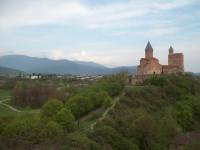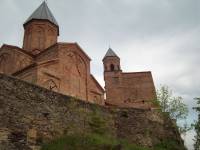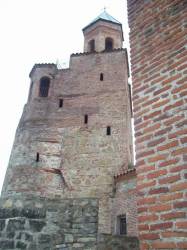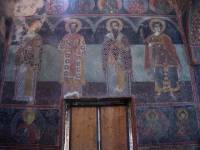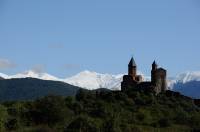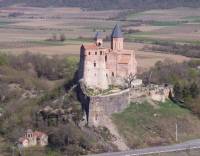For two centuries, Gremi was Kakhetis not only political and economic, but also cultural and educational center. The chronicle of Kakheti history, that has failed to reach the modern times, was written here. Eminent literal compositions of Persia have been translated also, while scientific and literal work was under way at full blast. People still believe that there was a scientific academy in Gremi. The city was obliterated during the first invasions of Iranian Shah-Abbas I (1614-1617). Since then, Gremi subsisted as the capital of Kakheti Kingdom for only a few years.
The medieval city, holding about 50 hectares of area, was lying below the Sameba mountain range, coming from the Caucasus Mountains. Gremi is considered quite a well-organized and a well-built city, supplied with water from Lopoti River through water channels built by Levan, the King of Kakhs. The water was drinkable; it was also used in bathhouses, fountains etc.
The old city was comprised of four major parts; a handful of architectural monuments are maintained even nowadays. One of the important medieval period churches of Georgias architecture - the Church of Michael and Gabriel Archangels that was built by Levan, the King of Kakhs (1518-1574), is erected at higher point in the center of the town. Painting of the church belongs to the same period. The tomb of the King is supposed to be there. A three-storey archaic palace, with a bell-tower above, stands beside the church. There are also wine-cellars, a winepress and ruins of other buildings of economy purpose. There was also an initial residence for kings. This neighborhood of the city is the oldest, surrounded with a small fence, functioning as a citadel. The compound looks at nearby vicinities from above, naturally turning into its center.
The second part of the city was an aristocratic district, which was home of palaces, halls of Kakheti Kings and nobles; also open quarters with fountains, a bathhouse and others. Several compounds of palaces and chambers were built in different times: under rule of King Levan (1518-1574), then, during the reign of Alexandre II and finally, under Teimuraz I (1606-1615). Buildings were noted for their Persian-Eastern elements, although, they definitely carried the Georgian image.
The third part of Gremi is the broadest and more diverse. It served as the citys commercial and artisan district. There were discovered some buildings characteristic for medieval cities - Karvasla, Kulbakebi, the bathhouse and others. In the center of the district, there was a place rounded with a fence, called a "Tarsa Fence".



